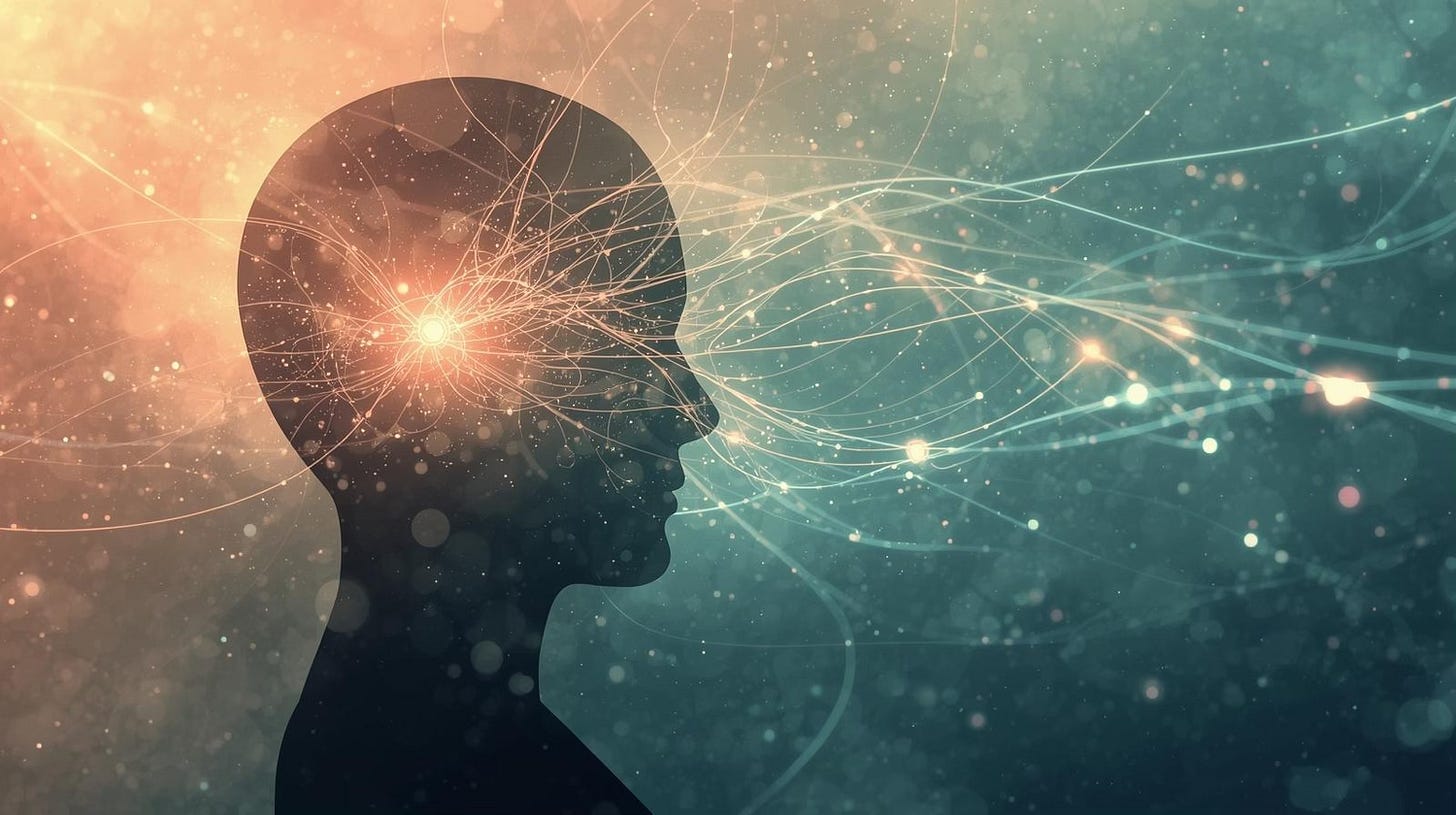The Brain Science Behind the Hardest Conversation You’ll Ever Have
Telling your family you have cancer
You’re sitting at the dinner table. Your three kids across from you. The words “I have cancer“ stuck in your throat like broken glass. Every instinct screams to protect them. To soften it. To manage their reactions before they even happen.
But neuroscience tells us this protective instinct often backfires. Suppressing emotion—yours or theirs—activates stress circuits that make the pain linger, rather than dissolve.
I’m sharing the raw truth about telling my children and parents about my diagnosis. It wasn’t just a story about a tough conversation. It revealed why letting emotions flow is crucial for building the resilience we so desperately need during life’s hardest moments.
The Persistence Loop in Your Brain
When you try to suppress emotions, your prefrontal cortex goes into overdrive, trying to “wrestle control” from your deeper emotional centers, like the amygdala. The harder you work to suppress, the more your brain actually amplifies that emotional signal. Neuroscientists call this the ironic process theory: the very act of resistance keeps unwanted feelings active, much like obsessing over not thinking of a pink elephant. Emotional circuits stay lit up, creating feedback loops where distress persists.
From the episode:
“You cannot protect your family from how they’re going to feel. They will react. They will process. They will worry—because they love you.“
Brain imaging studies show that allowing emotions to be expressed activates adaptive pathways—your amygdala fires, your anterior cingulate cortex contextualizes the feeling, and the prefrontal cortex can regulate, create meaning, and integrate the experience for healing, instead of working to shut it all down.
What Happens When You Let It Flow
I didn’t plan a neuroscience experiment at my dinner table. But that’s what happened:
“All of it—the logic, the tears, the fear—it was love. Every reaction was love trying to find its footing.“
My oldest’s matter-of-fact response? A classic prefrontal cortex coping strategy. My middle son’s tears signaled his amygdala working through the intensity. My daughter’s questions about daily life—her brain seeking to create context and prepare for change.
Research confirms these real moments matter: When families openly share their emotions during health crises, it activates neural pathways that move brains out of repetitive stress loops and toward resolution. The emotion gets encoded, contextualized, and eventually integrated into a new reality.
The Forty-Three Year Echo
Later, I called my parents—a forty-three-year survivor and the mother of another twenty-year survivor. They were calm, solid, no drama. Their brains had been rewired by decades of cancer in the family. The neural fear circuits had been replaced by experience and resilience—but even for them, each feeling needed its own acknowledgment for true adaptation.
My mom’s annoyance—and her insistence on being there for my first chemo—was her emotional brain seeking completion. For me, the protocol was different, and her expectations didn’t match my reality. But she still needed to support, to feel, and to resolve.
The Strength in the Struggle
The most profound moment was recognizing this truth:
“That which you resist, persists. If you can let the emotions flow—theirs and yours—they’ll soften. And what’s left after that is love.“
This isn’t just wisdom—it’s hard neuroscience. Trying to suppress distress, trying to be strong above all, actually diverts mental energy into concealment. That increases anxiety, impairs memory, and blocks the bonding that helps everyone survive and heal. But when you allow emotion to move through, feedback loops dissolve and genuine connection emerges.
Breaking the Protection Pattern
Every parent’s instinct is to shield kids from pain. Every adult child wants to protect aging parents. But the research shows this protective impulse, though born of love, leads to isolation when connection is most needed.
By allowing my family authentic reactions—tears, fear, questions, even annoyance—we tapped into what neuroscientists call “network support.” Our brains started working together to process the new reality, rather than alone in silent suppression.
Your Brain on Truth
The framework that emerged from that dinner wasn’t planned—it was biology doing its job:
Choose your moment: Find a calm space so brains can process safely.
Lead with truth and hope: Give your loved ones real information. Uncertainty amplifies anxiety circuits.
Let them feel it: Every tear, every question, every silence—these are the brain’s adaptive strategies in motion.
Stay open: Every follow-up conversation rewires pathways for greater steadiness.
Each step aligns with the way the brain naturally wants to process emotional news—through honesty, time, and connection, not management or denial.
Reflection Questions for Your Journey
As you face your own difficult conversations, ask yourself:
Where in your body do you feel the urge to protect others from their emotions?
What would happen if you trusted their brains to adapt naturally?
When has emotional suppression—yours or others’—made coping harder?
What feelings are you resisting now, and what might soften if you let them move?
How could embracing messy, real emotions actually strengthen your family’s capacity to support you?
Neuroscience is clear: Our brains are built to process even the hardest feelings—if we let them. The path to resilience isn’t around the emotions; it’s straight through them. Together.
Telling the people you love about cancer is brutal. But it’s where genuine connection and real strength are forged. If this helped you, subscribe at KCAPodcast.com, share the episode, and remember: cancer can be in the room, but it does not get to take your power.
Links to research cited in this article.
https://med.stanford.edu/news/all-news/2025/05/emotions-eye-puff.html
https://www.sciencedirect.com/science/article/pii/S0149763424004342
https://journals.plos.org/ploscompbiol/article?id=10.1371%2Fjournal.pcbi.1004722
https://www.sciencedirect.com/science/article/abs/pii/S0149763421005625
https://psychscenehub.com/psychinsights/neuroscience-of-emotions-3/





